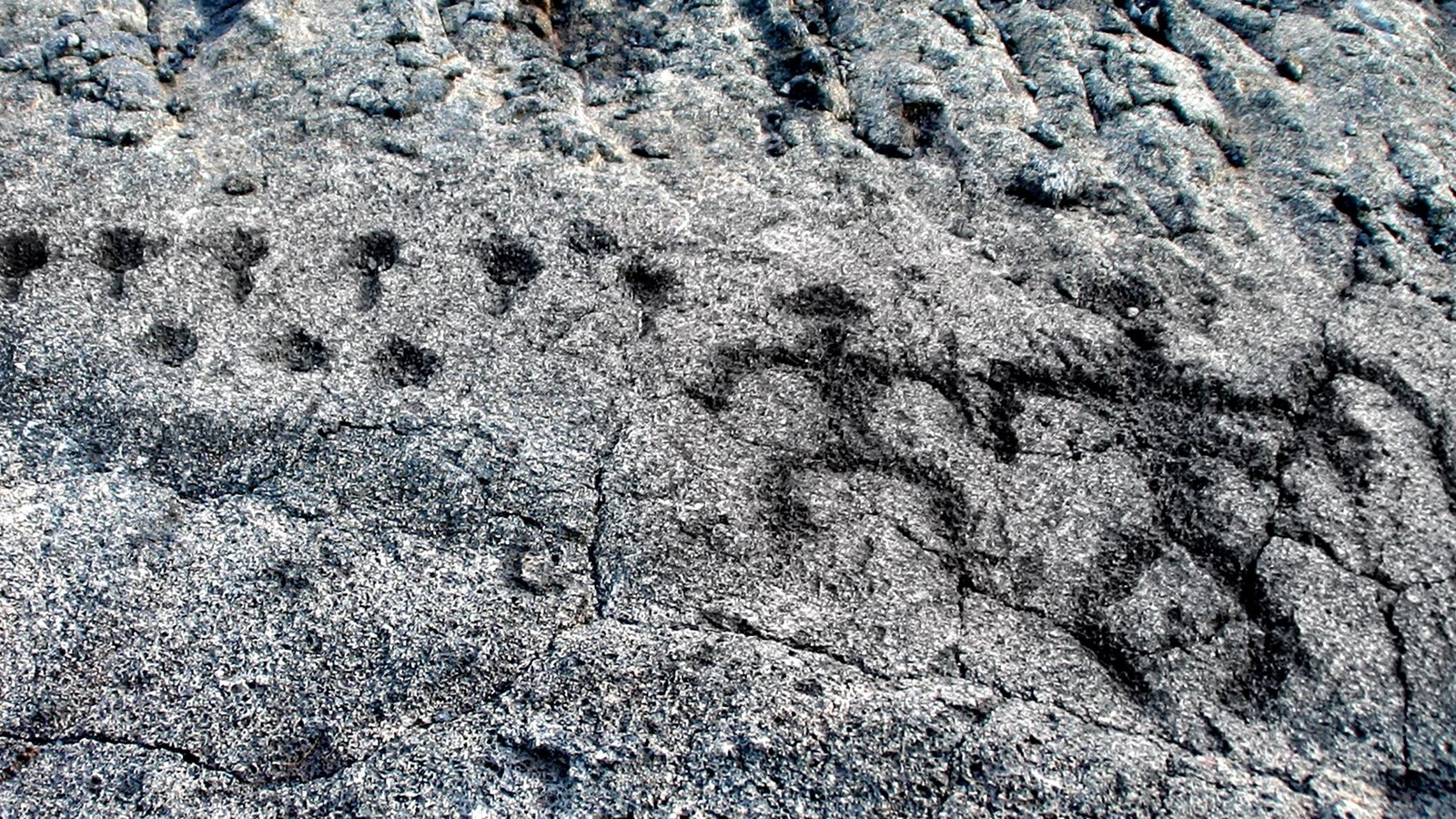Last updated: September 29, 2021
Place
Stop 4- Puʻuloa Petroglyphs

NPS Photo/J.Robinson
Quick Facts
Amenities
1 listed
Historical/Interpretive Information/Exhibits
These simple impressions embody the essence of Puʻuloa.
The name Puʻuloa (long hill) carries a kaona (hidden meaning) – hill of long life. Families came here to place the piko (umbilical stump) of their child in a pecked depression they made. The hope is that the mana (spiritual guiding energy) of Puʻuloa blesses the child with a long and prosperous life. It is a connection to their ancestral lands.
Piko is also another word for the navel in Hawaiian- it is where life begins. There are conceptually three piko: piko po’o, piko waena, and piko na’au. Piko po'o is at the top of a person's head. It is the opening that connects the individual's spirit with their 'aumakua (departed, but ever-present deified ancestors). Piko waena, or the navel, represents the person’s connection to his/her parents. This piko covers the na'au (gut) and holds an individual’s knowledge, wisdom, and emotions. Piko ma'i is the genitalia, which links the person to his/her descendants.
Each poho (cupule) houses a single child’s piko. Over 16,000 are piko-related carvings – a testament to the importance of both Puʻuloa and ʻohana (family). What traditions are important to your family when a new child is born?
ʻAno ʻai ke aloha īa ʻoukou no ke kipa ʻana mai i Puʻuloa. Hele mai a ʻike i kēia ʻāina me ke aloha a me ka mahalo. With aloha, we welcome you to Puʻuloa – a place we honor and cherish. Please stay on the marked trail and boardwalk, for once this site and its petroglyphs are harmed, the stories they cradle will be lost forever. – Nā Kūpuna, Our Hawaiian Elders
